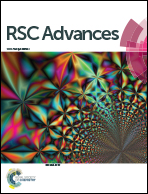Optimization of ultrasound-assisted extraction of protein from egg white using response surface methodology (RSM) and its proteomic study by MALDI-TOF-MS
Abstract
The presented work proposes an approach based on proteomic techniques to identify proteins in egg white. Response surface methodology (RSM) with Box–Behnken design (BBD) was used to optimize the ultrasound-assisted extraction process of proteins from the egg white. The effects of extraction parameters, including trifluoroacetic acid (TFA) concentration, ultrasonic power and ultrasonic time on the extraction process of proteins were evaluated. The optimized extraction parameters were trifluoroacetic acid (TFA) concentration, 0.53% (v/v); ultrasonic power, 50% and ultrasonic time, 40 min. The effects of three factors (trypsin volume, pH of tryptic digestion and incubation time) on the tryptic digestion process of extracted proteins were investigated. The results showed that the optimized tryptic digestion conditions were as follows: volume of 10 μg mL−1 trypsin, 8 μL; pH, 7.0 and incubation time, 16 h. Under the optimized conditions, the peptide mixture was analysed using matrix-assisted laser desorption/ionization-time of flight-mass spectrometry (MALDI-TOF-MS). The methodology was successfully applied to free-range and barn-raised chicken egg white for protein identification. The results showed that 23 proteins and 29 proteins were identified in free-range chicken and barn-raised chicken egg white, respectively. Among them, the collagen peptides were found in egg white for the first time.


 Please wait while we load your content...
Please wait while we load your content...